Arunachal Pradesh
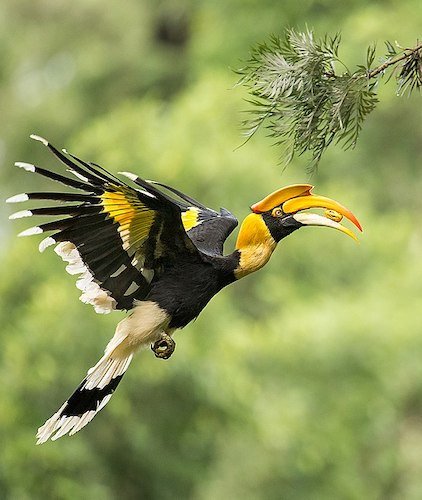
Arunachal Pradesh (literally ’Dawn-Lit Mountain Province’) is a state in northeast India. Itanagar is its capital and largest town with around 65,000 people. It borders the Indian states of Assam and Nagaland to the south. It shares international borders with Bhutan in the west, Myanmar in the east, and a disputed 1,129 km border with China’s Tibet Autonomous Region in the north at the McMahon Line. Arunachal Pradesh is claimed in its entirety by China as South Tibet as part of the Tibet Autonomous Region; China occupied some regions of Arunachal Pradesh in 1962 but later withdrew its forces.
Arunachal Pradesh has a population of c.1.8 million people in an area of 83,743 km2 (32,333 square miles). With only 17 inhabitants per square kilometre, it is the least densely populated state of India. It is an ethnically diverse state, with predominantly Monpa people in the west, Tani people in the centre, Mishmi and Tai people in the east, and Naga people in the southeast of the state. About 23 major tribes and 100 sub-tribes live in the state, including Nocte, Adi, Nyishi, Singpho, Galo, Tagin, Apatani. The Nyishi are the largest ethnic group in the region.
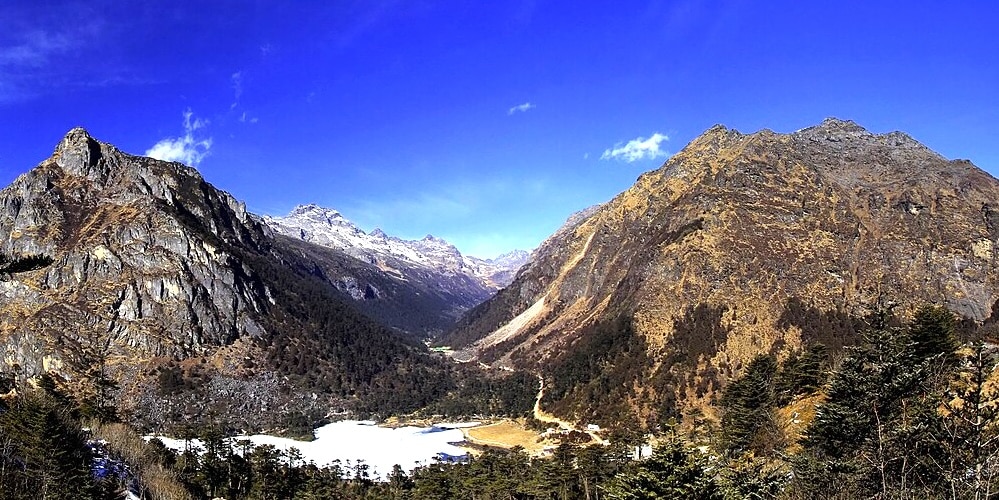
Madhuri Lake – ©Vikramjit Kakati CC BY-SA 4.0 via Wikimedia Commons
The highest peak in the state is Kangto, at 23,160 feet. Nyegi Kangsang, the main Gorichen peak, and the Eastern Gorichen peak are other tall Himalaya peaks. The state’s mountain ranges, in the extreme East of India, are described as ‘the place where the sun rises’ in historical Indian texts and named the Aruna Mountains, which inspired the name of the state. The villages of Dong (more accessible by car, and with a lookout favoured by tourists) and Vijaynagar (on the edge of Myanmar) receive the first sunlight in all of India.
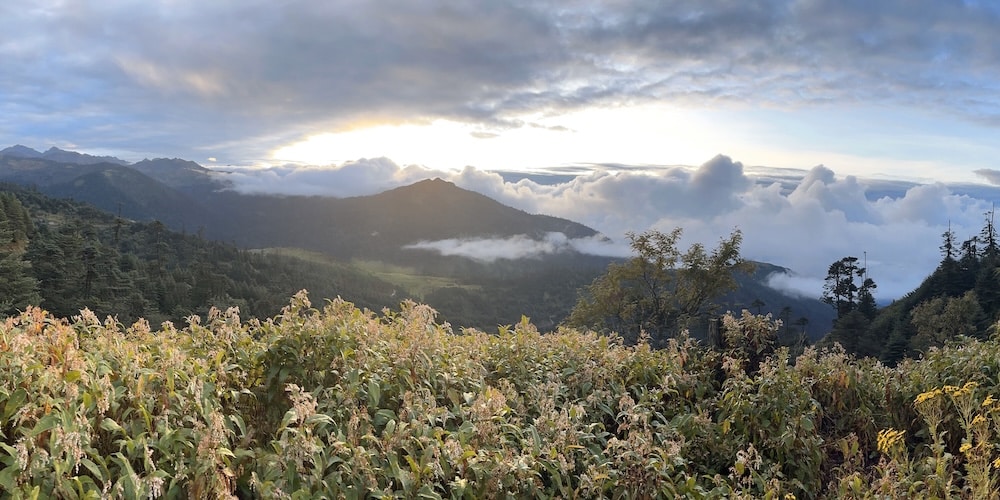
Major rivers of Arunachal Pradesh include the Kameng, Subansiri, Siang (Brahmaputra), Dibang, Lohit and Noa Dihing rivers. Subsurface flows and summer snow melt contribute to the volume of water. Mountains until the Siang River are classified as the Eastern Himalayas. Those between the Siang and Noa Dihing are classified as the Mishmi Hills that may be part of the Hengduan Mountains. Mountains south of the Noa Dihing in Tirap and Longding districts are part of the Patkai Range.
The climate of Arunachal Pradesh varies with elevation. The low-altitude areas have a humid subtropical climate. High-altitude areas (3,500–5,500 m) have a subtropical highland climate and alpine climate. Arunachal Pradesh receives between 80 and 200 inches of rainfall annually, 70%–80% of which is between May and October.

There have been 200 species of mammals recorded in the state. The major mammal species are tiger, leopard, snow leopard, Asian elephant, sambar deer, chital deer, barking deer, sloth bear, mithun (Bos frontalis), gaur, dhole, giant squirrel, marbled cat and leopard cat. Arunachal’s forests account for one-third of habitat area within the Himalayan biodiversity hot-spot. In 2013, 31,273 km2 (12,075 square miles) of Arunachal’s forests were identified as part of a vast area of continuous forests (65,730 km2 or 25,380 square miles, including forests in Myanmar, China and Bhutan) known as ‘intact forest landscapes’. There are three tiger reserves in the state: a reserve in Namdapha National Park, Mouling National Park and Pakke Tiger Reserve.
Birding Arunachal Pradesh
India’s easternmost corner Arunachal is also the land of the rising sun for the entire subcontinent. Nature’s blessing in the form of breath-taking hills & mountains and a spectacular variety of life has brought a unique identity to this hilly terrain. Forget about the exotic flora & fauna; the geographical features alone barely have any match… from snow-capped mountains to typically dense rain forests, from fast moving hilly streams to fully-grown rivers; Arunachal is full of surprises.
This high altitude Eastern Himalayan realm has lots to offer to the tourism industry as a whole. Apart from natural heritage, there are other reasons to visit Arunachal – be it culture, be it religious customs, be it tribal ethnicity, be it fairs & festivals, be it temples (Gumpha), be it war monuments, there is a wealth of cultural diversity and monuments to man’s past. Arunachal harbours 26 different tribes and communities. Whilst these tribes have certain racial similarities, they can be divided into three broad sections based on their socio-religious sentiments.
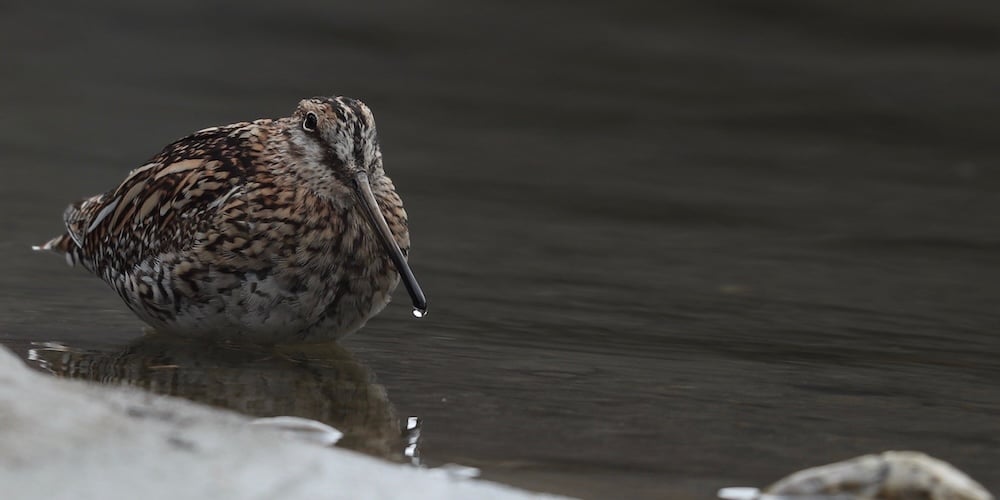
Solitary Snipe Gallinago solitaria – ©Bird-Photo-Tours ASIA
Moreover, when it comes to birding, Arunachal possesses exceptional richness in avian diversity. Almost every nook & corner of this hill state draws nature lovers from across the globe. A few selected protected areas are worthy of special mention such as Namdapha National Park, Talley Valley Wildlife Sanctuary, Pakhui Wildlife Sanctuary, Sessa Wildlife Sanctuary, D’ering Wildlife Sanctuary, Dibang Wildlife Sanctuary, etc. Interestingly, the western most parts of the state – Tawang & West Kameng Districts – rarely get any attention from the birdwatchers except for a few serious birders; rather they are visited mostly for their scenic beauty and for their ancient majestic Buddhist monasteries.
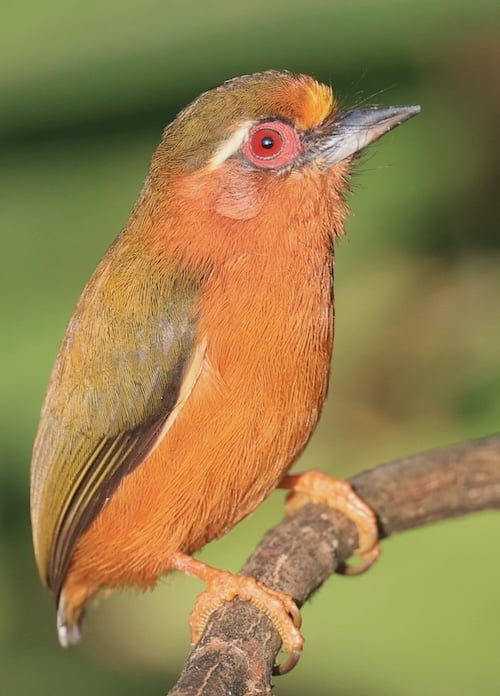
White-browed Piculet Sasia ochracea – ©Bird-Photo-Tours ASIA
From the bio-geographic point of view Arunachal has been crisscrossed by Sino-Himalayan Temperate and Sino-Himalayan Subtropical biomes. There are about 25 notified Important Bird Areas in the state. West Kameng and Tawang Districts alone boasts hundreds of avian species including many migratory and endangered ones. One can check out the following treks across the region for magnificent birding experiences; they are Zemithang, Sangti Valley, Baily Trails, Tawang area, etc.
Nature watching is, of course, all about luck; if one is lucky – one could be amazed by the glimpses of beautiful but endangered birds. Some of the most notable are Sclater’s Monal Lophophorus sclateri, Satyr Trogopan Trogopan satyra, Blyth’s Trogopan Trogopan blythii, Rufous-necked Hornbill Aceros nipalensis, Yellow-rumped Honeyguide Indicator xanthonotus, Spotted Wren Babbler Spelaeornis formosus, Broad-billed Flycatcher-Warbler Tickellia hodgsoni, Rufous-breasted Bush Robin Tarsiger hyperithrus, Greater Long-billed Thrush Zothera monticola, Black-necked Crane Grus nigricollis, just to mention a few of those which can be found in the areas bordering Bhutan.
-
Number of bird species: 945
(As at June 2025)State Bird: Great Hornbill Buceros bicornis
Number of endemics: 1
Bugun Liocichla Liocichla bugunorum
-
Avibase
PDF ChecklistThis checklist includes all bird species found in Arunachal Pradesh , based on the best information available at this time. It is based on a wide variety of sources that I collated over many years. I am pleased to offer these checklists as a service to birdwatchers. If you find any error, please do not hesitate to report them. -
E-Bird
PDF ChecklistThis checklist is generated with data from eBird (ebird.org), a global database of bird sightings from birders like you. If you enjoy this checklist, please consider contributing your sightings to eBird. It is 100% free to take part, and your observations will help support birders, researchers, and conservationists worldwide.
-
Birds of the Indian Subcontinent
| By Richard Grimmett, Carol Inskipp & Tim Inskipp | Helm | 2025 | Edition 2 | Paperback | 544 pages, 240+ plates with colour illustrations; colour distribution maps, b/w illustrations | ISBN: 9781472984777 Buy this book from NHBS.com
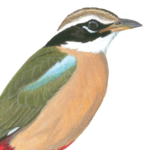
Birds of the Indian Subcontinent
Apple iOS | AndroidThe eGuide to Birds of the Indian Subcontinent is an interactive companion to Birds of the Indian Subcontinent – the definitive guide for birdwatchers visiting the region. It covers India, Pakistan, Nepal, Bhutan, Bangladesh, Sri Lanka and the Maldives. This application has specific features that will enhance your birding experience.
Indian Birds
Apple iOS | AndroidPioneers in bringing Indian Birding to the smart phone generation - Introducing Indian Birds, the time-honoured and cherished birding companion for India. Established in 2010, it proudly remains the sole mobile app available on App Store, offering bird enthusiasts the ability to explore bird names.Organisations-
Salim Ali Centre for Ornithology and Natural History
WebsiteSACON or the Salim Ali Centre for Ornithology and Natural History was formally inaugurated on 5th June 1990 and registered as a society under the Society Registration Act 1860. SACON, an autonomous organization is a national centre for studies in Ornithology and Natural History. The centre was named befittingly after Dr. S
Reserves-
BR Dihang-Dibang Biosphere Reserve
InformationSatellite ViewThe Dihang-Dibang Biosphere Reserve is one of the few nature preserves around the world which are untouched from the modern civilization. None of the parts of the BR is approachable by road and has to be approached on foot only. The huge gorges and the innumerable streams make it impossible to use animal transport. The health care and educational system are rudimentary. Other than the traditional agriculture, there is no any significant source of income generation. In short, it is a very difficult place to live in which is one of the deciding factor of having a very sparse population… -
NP Namdapha
InformationSatellite ViewNamdapha National Park is the largest protected area in the Eastern Himalaya biodiversity hotspot and is located in Arunachal Pradesh in Northeast India. It is also the largest national park in India in terms of area - 1,985 km2 (766 square miles). The national park harbours the northernmost lowland evergreen rainforests in the world at 27°N latitude. It also harbours extensive dipterocarp forests, comprising the northwestern parts of the Mizoram-Manipur-Kachin rain forests ecoregion. The park has about 425 bird species with many more to be recorded from work in the higher areas. There are five species of hornbills recorded from the area. Several species of rare wren-babblers have been recorded in Namdapha. Other bird groups include laughing thrushes, parrotbills, fulvettas, shrike babblers and scimitar babblers. The snowythroated babbler is a rare species of babbler found only in the Patkai and Mishmi Hills and nearby areas in Northern Myanmar, is found in Namdapha. Other rare, restricted range or globally endangered species include the rufous-necked hornbill, green cochoa, purple cochoa, beautiful nuthatch, Ward's trogon, ruddy kingfisher, blue-eared kingfisher, white-tailed fish eagle, Eurasian hobby, pied falconet, white-winged wood duck, Himalayan wood-owl, rufous-throated hill-partridge, and whitecheeked hill partridge. Several leaf warblers and migrants such as amur falcon and several thrushes can be seen here -
WS Daying Ering Memorial Wildlife Sanctuary
InformationSatellite ViewDaying Ering Wildlife Sanctuary (13 km from Pasighat) is spread over a cluster of river islands. A cruise through the Siang River is the only way to reach the sanctuary. One can reach there by cruising the Siang River. The unique ecosystem of this sanctuary has made it a natural habitat for different species of birds including migratory birds like cranes, wild ducks, storks, waterfowls, etc, which come from Siberia and Mongolia from September to February every year. -
WS Dibang
InformationSatellite ViewIt is located in the Upper Dibang Valley district covering an area of 4,149 km2 (1,602 sq mi). The sanctuary is rich in wildlife. Rare mammals such as Mishmi takin, red goral, musk deer (at least two species), red panda, Asiatic black bear, occasional tiger and Gongshan muntjac occur while among birds there are the rare Sclater's monal and Blyth's tragopan. -
WS Eaglenest
InformationSatellite ViewEaglenest Wildlife Sanctuary IUCN category IV (habitat/species management area) Bugun liocichla, a vulnerable species first discovered at Eaglenest WS in 1995 Location West Kameng, Arunachal Pradesh, India/Cona, Coordinates 27°06′0″N 92°24′0″ECoordinates: 27°06′0″N 92°24′0″E Area 218 square kilometres (84 sq mi) Established 1989 Visitors 75 (in 2006) Governing body Government of Arunachal Pradesh Eaglenest or Eagle's Nest Wildlife Sanctuary is a protected area of India in the Himalayan foothills of West Kameng District, Arunachal Pradesh. It conjoins Sessa Orchid Sanctuary to the northeast and Pakhui Tiger Reserve across the Kameng river to the east. Altitude ranges are extreme: from 500 metres (1,640 ft) to 3,250 metres (10,663 ft). It is a part of the Kameng Elephant Reserve. Eaglenest is notable as a prime birding site due to the extraordinary variety, numbers and accessibility of species. It is home to at least 454 species of birds. Its name derives from Red Eagle Division of the Indian army which was posted in the area in the 1950s. -
WS Kameng Elephant Reserve
InformationSatellite ViewThe reserve extends from the Papum River in the east to the common boundary between Arunachal Pradesh and Bhutan in the west. In the south it touches the common boundary of Sonai Rupai Wildlife Sanctuary and Nameri National Park of Assam. 300 species of birds have been recorded and there is a population of around 400 elephants. -
WS Kamlang
InformationSatellite ViewIt is situated in the Lohit District of the northeastern Indian state of Arunachal Pradesh. The park is named after the Kamlang River which flows through it. Wildlife in the park is similar to that found in the contiguous area of the Namdapha Tiger Reserve; there are 61 species of mammals, 105 bird species and 20 species of reptiles. -
WS TR Pakke Tiger Reserve
InformationSatellite ViewAt least 296 bird species have been recorded from PTR including the globally endangered white-winged wood duck, the unique ibisbill and the rare Oriental bay owl. PTR is a good place to see hornbills. Roost sites of wreathed hornbills and great hornbill can be observed on the river banks. Birds seen in PTR include: Jerdon's baza, pied falconet, white-cheeked hill-partridge, grey peacock-pheasant, elwe's crake, ibisbill, Asian emerald cuckoo, red-headed trogon, green pigeon spp., forest eagle owl, wreathed hornbill, great hornbill, collared broadbill and long-tailed broadbill, blue-naped pitta, lesser shortwing, white-browed shortwing, Daurian redstart, Leschenault's forktail, lesser necklaced laughing-thrush, silver-eared leiothrix, white-bellied yuhina, yellow-bellied flycatcher warbler, sultan tit, ruby-cheeked sunbird, maroon oriole, and crow-billed drongo. -
WS Talley Valley
InformationSatellite ViewArunachal Pradesh as a whole contains 40% of the floral and faunal species in India. The Ziro valley has a good share of this biodiversity. Thirty kilometres from the town of Ziro is the sanctuary.
Guides & Tour Operators-
Bird Tour Asia
Tour OperatorOff-piste Eastern Himalaya... -
Bird-Photo-Tours ASIA
Tour OperatorThe Eastern Himalayas centered around the Indian State of Arunachal Pradesh is one of the prime Bird-Photo-Tour locations in Asia due to the sheer magnitude of its avian diversity which exceeds 900 bird species.
Trip Reports-
2017 [04 April] - EagleNest
Report...The stops were for the Tragopan and the Trogan - both of them who decided to give us a skip. We, however, got sightings and record shots of Slaty-bellied Tesia and the elusive Rufous-capped Babbler.... -
2017 [05 May] - James Eaton -
PDF Report...we recorded a total of 455 species, but as always in this region, it is quality, not quantity that impressed us most. We began in western Arunachal Pradesh, soaking up Fire-tailed Myzornis, Himalayan Monal, Snow Partridge and the newly- described Himalayan Forest Thrush and its Alpine counterpart amid the dramatic alpine landscape at Se La before spending four days inside the now well-known Eaglenest Wildlife Sanctuary. -
2018 [05 May] - Phil Gregory
Report...The journey over to Lama Camp at Eaglenest took the morning, with Yellow-breasted Greenfinch for all, and Tickell's Thrush for some en route, and began with a major frisson of excitement when about half our group got to see Bugun Liocichla right by the camp, found just as they were coming up to meet us. It was a bust for those of us not there of course, but hope springs eternal......Nice birds this afternoon included good looks at Bhutan Laughing-thrush, Streak-breasted Scimitar-Babbler, Lemon-rumped Warbler, Rufous-throated and Streaked Barwing, Rufous-crowned Laughing-thrush and Striated Laughing-thrush.... -
2019 [05 May] - James Eaton - Nagaland, Eaglenest, Assam and Mishmi Hills
PDF ReportWe began in Nagaland, where four important laughingthrushes appeared – Yellow-throated, Spot-breasted, Striped and Assam, along with Naga Wren Babbler, Dark-rumped Swift and a superb male Blyth’s Tragopan in full view. A day at Kaziranga for Slender-billed Babbler, Indian Grassbird and the less subtle megafauna, before we ventured into Arunachal Pradesh, soaking up Himalayan Monal, Solitary Snipe, Fire-tailed Myzornis, Snow Partridge, Himalayan Forest Thrush and its Alpine counterpart amid the dramatic alpine landscape at Se La before spending four days inside the now well-known Eaglenest Wildlife Sanctuary. -
2019 [12 December] - Aseem Kothiala -
Report...Enroute, we could hear the calls of the skulker Snowy throated babbler, it indeed was one of the fastest disappearing birds that I had come across. Before one can watch through the viewfinder, they would call and fly off to another perch... -
2021 [04 April] - Nature Travel Birding
PDF Report... Farmlands on the Assam side (where we were), thick forested area in Arunachal Pradesh ahead of us and the mountain ranges of Bhutan on our left... -
2022 [05 May] - Jules Eden
PDF ReportWe were going for Ward’s Trogon and the joy of a private trip like this is that we were going to get it, as the plan was to stay until that moment and if it dragged on, to buy a house there, marry a local , get residency and only clear out of the mountains when the job was done. -
2024 [04 April] - Hannu Jännes
ReportOur epic journey began with a full day of travelling from Guwahati, the capital of the Assam province, to Dirang in Arunachal Pradesh. -
2024 [04 April] - Sikkim Birding Tours
PDF ReportPrivate Birding Tour of Dr. Jon Holmes & Mary Campbell, United Kingdom -
2024 [05 May] - Bent Otto Poulsen
PDF ReportAnnotated list & diary -
2024 [05 May] - Jan van der Laan
PDF Report...On arrival in Eaglenest Wildlife Sanctuary we encountered a herd of six Asian Elephants, but they left the road in peace. North of Sessni we started to look for one of our target birds, the Hodgsons Frogmouth. After an hoursearch and hearing several birds, we finally managed to see one bird at close range. We had dinner in Sessni Camp and finally went to sleep in our tent...
Other Links-
Bugun Liocichla
InformationThe Bugun liocichla (Liocichla bugunorum) is a passerine bird species from the Leiothrichidae family[2] closely related to the Emei Shan liocichla. First spotted in 1995 in Arunachal Pradesh, India, it was described as a new species in 2006.
Fatbirder - linking birders worldwide...
Skip to content

